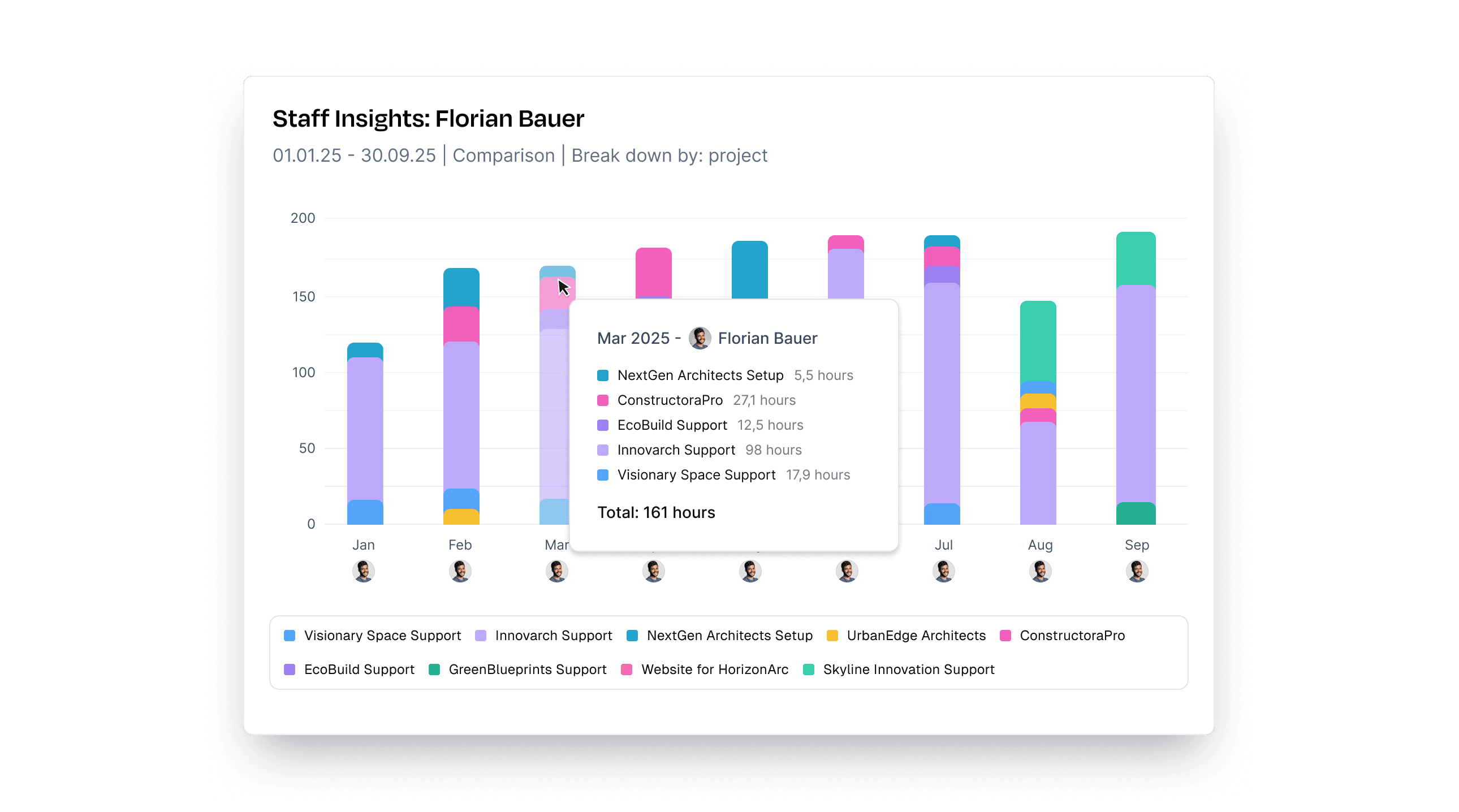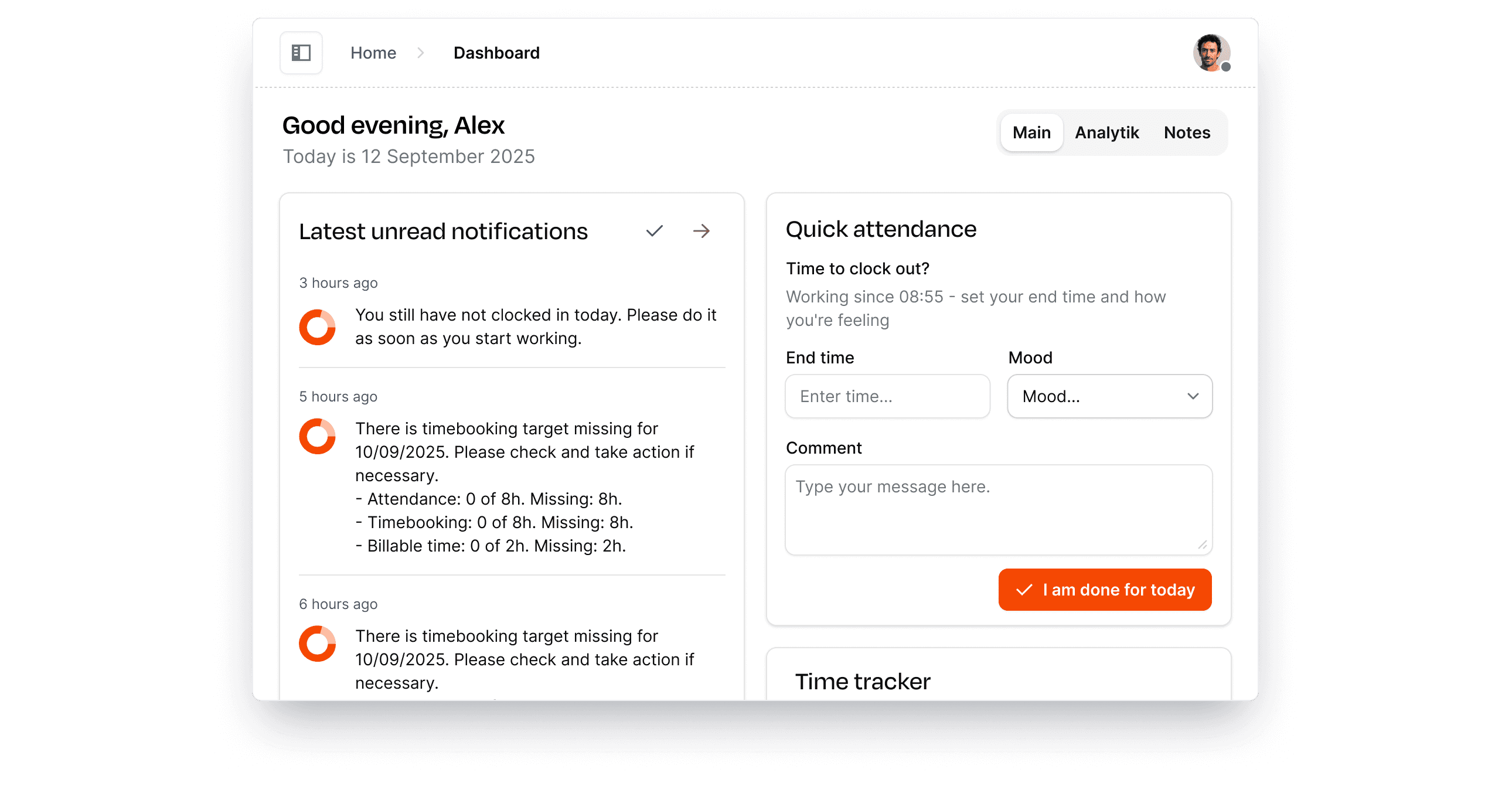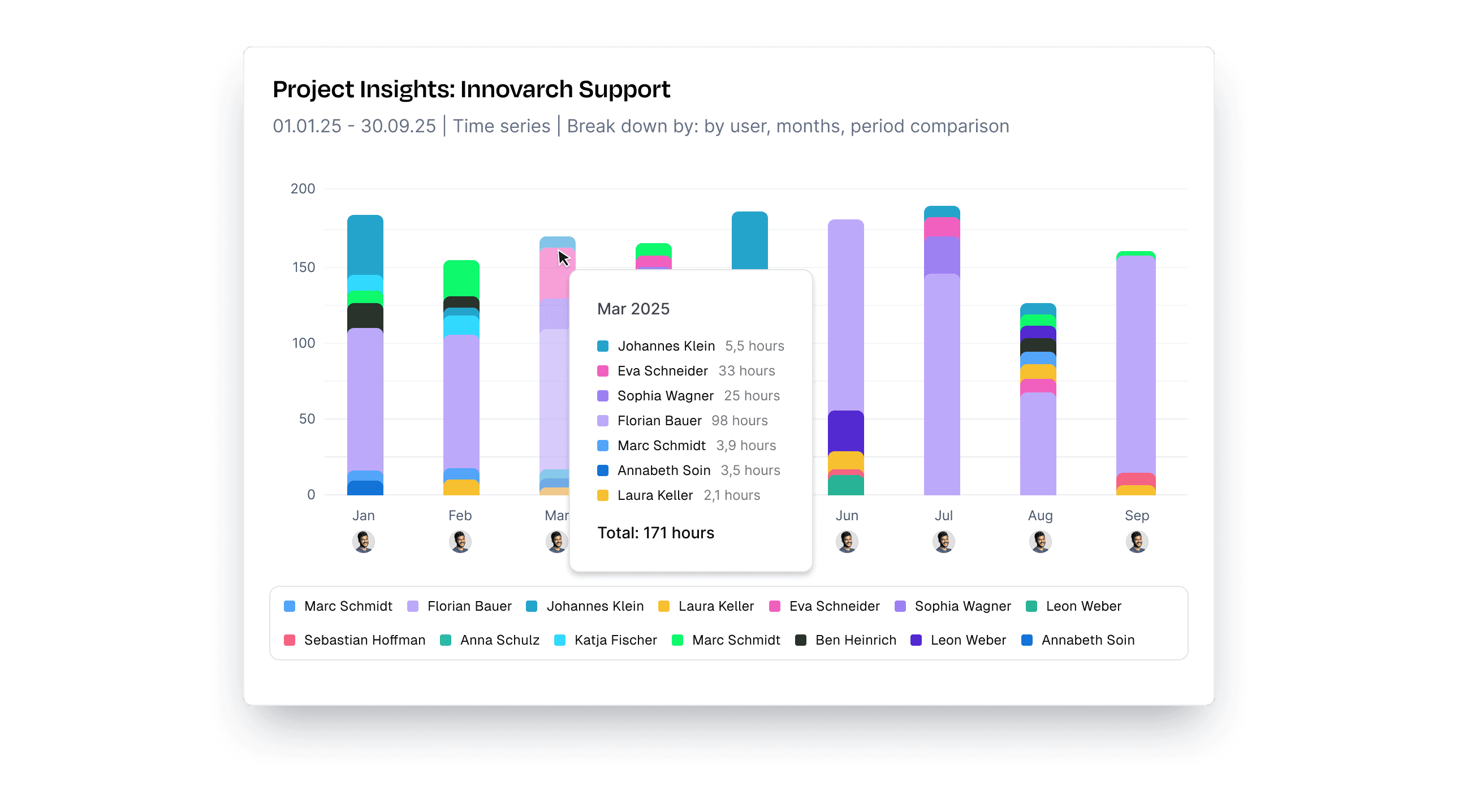
Written by
Lukas
•
Aug 20, 2025
•
Time Tracking
Agile teams love metrics. Story points, velocity, burndown charts, cumulative flow diagrams. You measure everything - except the time that actually goes into your work.
The problem: Story points aren't time.
Yes, you estimate in story points to capture complexity independent of individual speed. That makes sense. But story points are relative units, not absolute time measures. A 5-point task might mean 3 hours for your team - or 15 hours. It depends on the project, the context, the team composition.
Without actual time data, your velocity is nothing but an estimate based on estimates. You plan sprints based on assumptions, not facts.
A Munich-based e-commerce agency - 28 developers, running Scrum since 2018 - did the math in 2023: Their average velocity was 42 story points per sprint. Sounds stable, right? But when they started tracking actual time, it turned out: Sometimes that was 180 hours, sometimes 280 hours. The "stable" velocity had masked extreme fluctuations. No wonder their forecasts were constantly off.
What Retrospectives Really Need: Data, Not Anecdotes
Sprint retrospectives should help you improve. But the majority of teams don't use objective project data in their retrospectives, as a recent 2025 study shows. Instead, you rely on subjective impressions and memory.
This leads to discussions like this:
"I felt like we wasted a lot of time in meetings."
"Well, I thought the meetings were okay actually."
"The login feature was more complicated than expected."
Great. And now what? Without numbers, you have no basis for informed decisions.

The low implementation rate of retrospective action items is no accident - many teams struggle to translate their insights into measurable improvements. Without objective data, action items remain vague and are rarely prioritized.
With time tracking data, the retrospective becomes concrete:
How much time actually went into planned stories vs. unplanned tasks? (Spoiler: Often 50/50, but nobody notices without data.)
Which task types are consistently underestimated? (For many teams: bug fixes and "small" refactorings.)
Where are recurring planning errors? (Tasks that always take longer than estimated.)
These questions can only be answered with real data. Not with gut feeling.
A software house in Cologne - 14 developers, developing B2B SaaS products - started systematically incorporating time data into their retrospectives in 2024. The result: They increased their average story completion rate from 68% to 89% in three months. Not because they worked harder, but because they finally saw where their time was actually going. Meetings were shortened, task estimates adjusted, and scope creep was made visible - with numbers, not guesses.
Sprint Planning: From Guesswork to Realism
Teams with historical velocity data can improve their planning - but that's only half the truth.
Because velocity is based on story points. And story points, as mentioned, aren't time.
Imagine: Your team has a velocity of 40 story points per sprint. Great. Now your stakeholder asks: "When will feature X be ready?" You calculate: Feature X is 120 story points, so three sprints.
Sounds solid. But what if the 40 story points in the last sprint were actually 220 hours, and your team only has 160 hours available next sprint due to vacation? Then you won't make the 40 story points, and your forecast was nonsense.
This is where time data comes in:
With historical time tracking, you can see how many hours an average story point actually takes in your project. This gives you a project-specific baseline. You see:
How long does a 5-point task take on average? (Maybe 8 hours. Maybe 18.)
How does this change over time? (Are you improving? Or is the code getting more complex?)
What kind of tasks take longer than estimated? (Frontend? Backend? Integrations?)
This doesn't just make your velocity more stable - it makes it interpretable. You're no longer planning with abstract points, but with time. And time is the currency your stakeholders think in.
Transparency Is Not Surveillance
Now comes the objection: "Time tracking is micromanagement. It destroys team trust."
Maybe. If you use time tracking as a control tool. If the manager asks every morning: "Why did you only log 6 hours yesterday?"
But that's not what time tracking is for.
In healthy agile cultures, time tracking is a tool for self-management. It shows the team where its time goes. It enables open discussions about bottlenecks, inefficiencies, and hidden time sinks.
Time tracking isn't an instrument of surveillance. It's an instrument of transparency. And transparency is the foundation of Scrum.
Think about it: You do daily standups to be transparent. You do sprint reviews to be transparent. You track story points to be transparent. But when it comes to time - the most valuable resource you have - you don't want to be transparent?
That doesn't make sense.
How Leadtime Makes Agile Time Tracking Work
Most time tracking tools are annoying. They pull you out of flow, demand manual entries, and in the end the data is so incomplete it's useless.
Leadtime works differently.
Task-Based Tracking, Right in Your Workflow
Developers, consultants, creatives log their time directly on the tasks they're working on. No separate tools, no context switching. The time tracker runs in the header, always visible, always ready. One click, and time is running.

Real-Time Dashboards for Better Retrospectives
With Project Insights you see at a glance how your time is distributed over weeks and months:
Time series analyses: How has working time developed over the last 6 sprints?
Breakdown by task type: How much time goes into features vs. bugs vs. management?
Breakdown by user: Who works on what, and for how long?

All data is visually prepared - as bar charts, stacked bars, pie charts, trend lines. Perfect for your sprint retrospectives.
Billable vs. Non-Billable Time
With Employee Insights you see not only how much time was logged, but also how valuable that time was:
Billable Time: Work you can bill to your clients.
Non-Billable Time: Internal work, overhead, meetings.

This doesn't just help with billing. It also shows your team where value-creating work happens - and where it doesn't.
Automatic Reminders - Complete Data Without Stress
Nobody likes logging time retroactively. That's why Leadtime has Automatic Reminders. If someone forgets to log their time, they're automatically reminded. The result: Complete data. No gaps. No catch-up on Friday afternoon.

No Double Data Entry
Time entries automatically flow into dashboards, project analyses, and forecasts. Real-time. You don't maintain data twice. You log your time - and Leadtime turns it into insights.

Agile Gets Better With Data
Agile and time tracking aren't opposites. They're allies.
Time tracking provides the feedback loop that makes agile teams truly adaptive. It makes planning realistic, forecasts reliable, and retrospectives data-driven.
Teams that ignore time tracking aren't avoiding bureaucracy. They're giving up insights that enable growth, efficiency, and stability.
Leadtime shows that agile freedom and disciplined data collection don't contradict each other - they can scale together.



